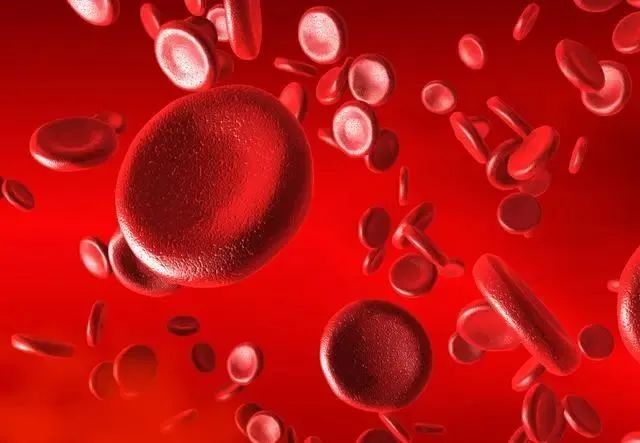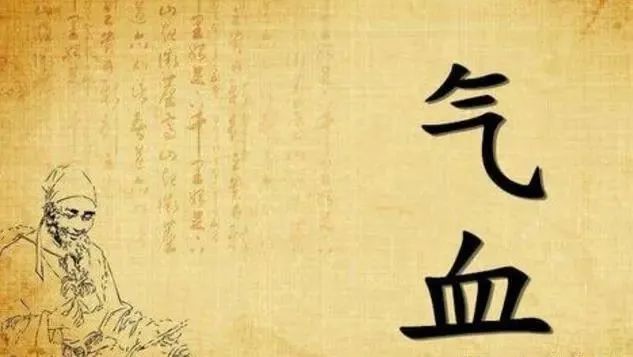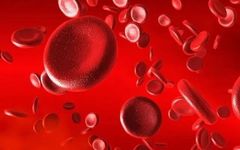Qi and blood are the material basis for the physiological activities of all organs and tissues in the human body, and the generation and movement of qi and blood rely on the normal physiological functions of the organs. Therefore, pathologically, when the organs are affected, it inevitably impacts the qi and blood throughout the body, and any pathological changes in qi and blood will also affect the organs. The pathological changes of qi and blood are always reflected through the abnormalities of the physiological functions of the organs. Due to the close relationship between qi and blood, in pathological conditions, qi disorders will inevitably affect blood, and blood disorders will also affect qi, with qi disorders affecting blood being more common.
The pathogenesis of qi and blood imbalance, like the imbalance of yin and yang and the rise and fall of the righteous and evil, is not only the basis for various pathological mechanisms of the organs and meridians but also the foundation for analyzing and studying the pathogenesis of various diseases.

Qi Imbalance
The pathological changes of qi include insufficient generation or excessive consumption of qi, abnormal movement of qi, and decline in the physiological functions of qi, specifically manifested as qi deficiency, qi sinking, qi stagnation, qi counterflow, qi obstruction, and qi collapse.
1. Qi Deficiency: Qi deficiency refers to the pathological changes resulting from insufficient original qi, leading to a decline in the functions of the whole body or certain organs. Qi deficiency is primarily characterized by insufficient original qi, reduced organ function, and decreased resistance to disease. The main causes of qi deficiency are often congenital insufficiency, postnatal malnutrition, or dysfunction of the lungs, spleen, and kidneys, and it can also result from excessive labor, prolonged illness, or aging. Qi deficiency is commonly seen in chronic diseases, elderly patients, nutritional deficiencies, recovery periods from illness, and weakened constitutions. Clinically, it is characterized by shortness of breath, reluctance to speak, fatigue, and a weak, soft pulse.
The characteristics of qi deficiency in various organs are often related to their physiological functions, such as lung qi deficiency, which is characterized by a decline in the function of “governing qi”; heart qi deficiency, which is characterized by a decline in the functions of “governing blood vessels” and “housing the spirit”; spleen and stomach qi deficiency, which is characterized by a decline in the functions of “transforming and transporting food and fluids” and “transporting essence” as well as sinking of the middle qi; and kidney qi deficiency, which is characterized by a decline in the functions of “storing essence,” “producing marrow,” “transformation,” “sealing and storing,” and “receiving qi.”
Since the lungs govern the qi of the entire body, and the spleen is the foundation of postnatal qi and blood generation, spleen and lung qi deficiency directly affects the generation of original qi. Therefore, the clinical condition referred to as qi deficiency often specifically indicates spleen qi deficiency, lung qi deficiency, or a combination of both.
Although qi deficiency and yang deficiency both indicate a decline in the functional activity of the organs and a weakened ability to resist disease, qi deficiency refers to a simple decline in function, while yang deficiency occurs on the basis of further development of qi deficiency, resulting in a deficiency of yang qi. Thus, qi deficiency falls under the category of yang deficiency, but qi deficiency does not necessarily imply yang deficiency. The distinction lies in that qi deficiency is a deficiency without cold signs, while yang deficiency is a deficiency with cold signs.
Due to the close relationship between qi, blood, and body fluids, qi deficiency inevitably affects blood and body fluids, leading to various pathological changes in blood and body fluids. For example, qi deficiency can lead to blood deficiency, blood stasis, and hemorrhage, and it can also cause metabolic disorders of body fluids, such as spleen qi deficiency failing to transform and transport dampness, resulting in phlegm retention and edema.
2. Abnormal Upward and Downward Movement: Abnormal upward and downward movement includes qi sinking, qi collapse, qi stagnation, qi counterflow, and qi obstruction.

(1) Qi Sinking: Qi sinking is one of the pathological mechanisms of qi deficiency, characterized by the inability of qi to rise, resulting in a downward movement instead. Qi sinking often develops from further progression of qi deficiency. The spleen is responsible for uplifting, and spleen qi deficiency can easily lead to qi sinking, commonly referred to as “sinking of the middle qi.” The relative stability of the position of the internal organs relies on the normal movement of qi. Therefore, in the case of qi deficiency and weakened uplifting force, certain internal organs may sag, such as gastric prolapse, kidney prolapse, uterine prolapse, and rectal prolapse, often accompanied by symptoms such as abdominal distension, frequent urge to defecate, shortness of breath, fatigue, low voice, and weak pulse.
(2) Qi Collapse: Qi collapse refers to a pathological change indicating extreme qi deficiency, leading to the risk of loss and extinction. Due to severe depletion of qi, blood, and body fluids, the physiological functions of the organs decline drastically, and true qi leaks out, resulting in a critical state of collapse. Qi collapse can be classified into gradual collapse and sudden collapse: gradual collapse occurs when vital qi is gradually consumed, leading to extreme organ dysfunction; sudden collapse occurs when vital qi is suddenly depleted, resulting in the loss of yin and yang. For example, heart qi collapse leads to a floating mind and a pulse that is faint and nearly absent; liver qi collapse leads to blurred vision and slight twitching of the limbs; spleen qi collapse leads to significant muscle loss and persistent diarrhea; lung qi collapse leads to high respiratory rates and thunderous snoring; kidney qi collapse leads to involuntary loss of fluids and difficulty in breathing. Sudden loss of yin qi results in wrinkled skin and sunken eyes, restlessness, and delirium; sudden loss of yang qi results in profuse sweating and cold extremities.
(3) Qi Stagnation: Qi stagnation refers to pathological changes characterized by the stagnation of qi in certain organs, meridians, or local areas. Qi stagnation is primarily caused by emotional distress, phlegm, dampness, food accumulation, blood stasis, and external injuries, leading to obstruction of qi flow and resulting in dysfunction or impairment of certain organs and meridians, with clinical features of distension and pain. Since the movement of qi in the body is closely related to the liver’s role in regulating and dispersing, the lung’s role in descending and dispersing, the spleen’s role in uplifting clarity, the stomach’s role in descending turbidity, and the intestines’ role in separating and transporting, qi stagnation is often associated with dysfunction of these organs.
When qi flows, blood flows; when qi stagnates, blood stasis occurs. When qi flows, body fluids also flow; when qi stagnates, body fluids stagnate. Therefore, qi stagnation can lead to blood stasis and fluid retention, resulting in pathological changes such as blood stasis, phlegm retention, and edema.
(4) Qi Counterflow: Qi counterflow refers to a pathological change characterized by the reversal and disorder of qi flow. Qi counterflow primarily refers to the upward reversal of qi flow, which is a pathological change resulting from abnormal movement of qi and the disorder of qi in the organs. Qi counterflow is often caused by emotional distress, inappropriate food temperature, or phlegm obstruction. Qi counterflow is most commonly seen in the lungs, stomach, and liver. The lungs should clear and descend; if lung qi counterflows, it results in cough and upward qi; the stomach should descend and harmonize; if stomach qi counterflows, it results in nausea, vomiting, belching, and hiccups; the liver governs upward movement; if liver qi counterflows, it results in excessive upward movement, leading to headaches, facial redness, and irritability. Since the liver is a solid organ that actively governs upward movement and stores blood, when liver qi counterflows, it can lead to blood following the counterflow of qi, resulting in coughing up blood, vomiting blood, or obstructing the clear orifices, leading to fainting.
Generally speaking, qi counterflow is primarily due to excess, but there are also cases where deficiency leads to qi counterflow. For example, lung deficiency leading to loss of descending function or kidney deficiency failing to receive qi can lead to lung qi counterflow; stomach deficiency can also lead to stomach qi counterflow, which is classified as deficiency leading to qi counterflow.
(5) Qi Obstruction: Qi obstruction refers to a pathological change characterized by the blockage of qi flow in the organs and meridians. Qi obstruction is often caused by external pathogens such as wind, cold, dampness, heat, and phlegm obstructing the organs or blocking the meridians, leading to the loss of normal flow in certain orifices. For example, if heart qi is obstructed, it can lead to delirium and convulsions; if chest and lung qi is obstructed, it can lead to chest tightness and wheezing; if bladder qi is obstructed, it can lead to urinary retention; if large intestine qi is obstructed, it can lead to constipation; if meridian qi is obstructed, it can lead to joint pain. Among these, heart obstruction leading to confusion is the most severe, and the term “obstruction syndrome” primarily refers to heart qi obstruction.
Blood Imbalance
The abnormal physiological function of blood primarily manifests as insufficient blood generation or excessive loss, abnormal blood flow, and reduced nourishing function of blood. Blood imbalance includes blood deficiency, blood stasis, blood heat, and hemorrhage.
1. Blood Deficiency: Blood deficiency refers to a pathological change characterized by insufficient blood and reduced nourishing function. The causes of blood deficiency include: excessive blood loss, such as from vomiting blood, nosebleeds, excessive menstruation, or traumatic bleeding, leading to significant loss of blood, while new blood cannot be generated and replenished in time; insufficient blood generation due to weak spleen and stomach, which are the sources of qi and blood generation, leading to a decrease in the substances that generate blood or a weakening of the function to generate blood; prolonged illness or chronic consumption leading to depletion of nourishing blood; and blood stasis obstructing the flow, where stagnant blood prevents the generation of new blood, ultimately leading to systemic blood deficiency.
Blood is one of the essential substances for maintaining life activities in the human body and has a nourishing effect. Therefore, insufficient blood cannot nourish the organs and tissues, inevitably leading to systemic or local malnutrition and gradual decline in physiological functions. Clinically, it is characterized by dizziness, pale complexion, and pale lips, tongue, and nails.
Since the heart governs blood, the liver stores blood, the spleen is the source of qi and blood generation, and kidney essence can transform into blood, blood deficiency is closely related to the dysfunction of the heart, liver, spleen, and kidneys. Blood deficiency and yin deficiency both indicate insufficient yin blood, but blood deficiency is a deficiency without heat signs, while yin deficiency is a deficiency with heat signs. The two have both connections and distinctions in their pathogenesis.
2. Blood Stasis: Blood stasis refers to a pathological change characterized by stagnant blood and impaired blood flow. Blood flow is obstructed due to qi stagnation, or blood circulation is slow due to qi deficiency, or phlegm and dampness obstruct the vessels, or cold pathogens invade the blood, causing blood to congeal, or heat pathogens invade the blood, causing blood to boil, all of which can lead to blood stasis, and in severe cases, blood can coagulate and form stasis. Therefore, blood stasis is a pathological product of blood stasis, and once blood stasis forms, it can obstruct the vessels and become a cause of blood stasis.
The pathogenesis of blood stasis primarily involves impaired blood flow. When blood stasis obstructs a certain area in the organs or meridians, it leads to pain, which is localized and does not alleviate with temperature changes, and can even form lumps, referred to as symptoms. Additionally, it may be accompanied by a dark complexion, rough skin, pale lips and tongue, and signs of blood stasis such as purpura and red streaks.
Blood stasis can further exacerbate qi stagnation, forming a vicious cycle where qi stagnation leads to blood stasis and blood stasis leads to qi stagnation. Since blood stasis interacts pathologically with qi deficiency, qi stagnation, blood cold, and blood heat, blood stasis can often present with combinations of cold and heat, as well as coexisting blood stasis with qi deficiency, qi stagnation, and blood deficiency.
3. Blood Heat: Blood heat refers to a pathological change characterized by heat in the blood, accelerated blood flow, and potential obstruction. Blood heat is often caused by external heat pathogens invading the body, or external cold pathogens transforming into heat within, injuring the blood, or emotional distress leading to prolonged stagnation and transformation into fire, generating internal heat that injures the blood.
Since warmth promotes blood flow, in cases of blood heat, blood circulation accelerates, potentially scorching the vessels and causing blood to flow abnormally; heat can also consume yin blood and body fluids. Therefore, the pathological changes of blood heat are characterized by the presence of heat signs, along with blood loss, blood movement, and injury to yin.
4. Hemorrhage: Hemorrhage refers to a pathological change characterized by blood overflowing outside the vessels. Its formation is often due to upward counterflow of fire qi, or heat pathogens forcing blood to flow abnormally, or qi deficiency failing to contain blood, or blood stasis obstructing the flow, or external injuries damaging the vessels, leading to blood not circulating normally and overflowing outside the vessels. Hemorrhage can occur in various locations, and due to differences in the site, cause, volume, and color of the blood, it can present different pathological phenomena.
Excessive hemorrhage can lead to blood deficiency and qi weakness, developing into both qi and blood deficiency, thereby reducing the functional capacity of the organs. If a large amount of blood is suddenly lost, it can lead to qi escaping with the blood, potentially resulting in a separation of yin and yang and death.
Additionally, abnormalities in blood also include blood cold, which refers to a pathological change characterized by cold in the blood and slow blood flow, often caused by cold pathogens invading or internal cold due to yang deficiency, presenting with symptoms such as numbness and cold pain in the limbs, fear of cold in the heart and abdomen, abdominal masses, and alleviation with warmth, as well as women experiencing amenorrhea as a characteristic of the condition.
Imbalance Between Qi and Blood

The relationship between qi and blood is extremely close, mutually dependent and supportive in physiology, and thus pathologically, they also influence each other, leading to simultaneous diseases of qi and blood. Qi has the functions of promoting, warming, transforming, and governing blood; therefore, the deficiency and abnormal movement of qi will inevitably affect blood. For instance, if qi is deficient, blood cannot be generated, leading to blood deficiency; if qi is deficient, the functions of promoting and warming blood are weakened, leading to blood stagnation; if qi is deficient, the governing function is weakened, leading to blood overflowing and causing hemorrhage. If qi stagnates, blood will inevitably become obstructed; if qi is disordered, blood will follow the disorder, leading to vomiting blood, bloody stools, and excessive menstrual bleeding. On the other hand, blood has nourishing and transporting functions for qi; therefore, when blood is deficient or blood flow is abnormal, it will inevitably affect qi. For example, if blood is deficient, qi will also weaken; if blood is stagnant, qi will also become stagnant; if blood collapses, qi will lose its support and disperse. The imbalance between qi and blood primarily includes qi stagnation and blood stasis, qi failing to contain blood, qi dispersing with blood collapse, and both qi and blood deficiency.
1. Qi Stagnation and Blood Stasis: Qi stagnation and blood stasis refer to a pathological change characterized by qi stagnation and impaired blood flow, where both qi stagnation and blood stasis coexist. Qi stagnation and blood stasis often occur simultaneously. Due to the obstruction of qi flow, blood circulation is hindered, leading to qi stagnation and blood stasis, which can also occur due to external injuries. Generally, the liver governs the smooth flow of qi and stores blood, and the liver’s function in regulating qi flow is crucial. Therefore, qi stagnation and blood stasis are often closely related to abnormalities in liver function. Additionally, since the heart governs blood circulation, when the heart’s physiological function is disordered, blood stasis often occurs first, leading to qi stagnation. Clinically, qi stagnation and blood stasis are often associated with symptoms of distension, pain, purpura, and masses.
2. Qi Deficiency and Blood Stasis: Qi deficiency and blood stasis refer to a pathological change characterized by qi deficiency leading to weak blood circulation, where both qi deficiency and blood stasis coexist. Qi is responsible for moving blood; therefore, if qi is deficient, it cannot effectively promote blood flow. In mild cases, qi deficiency may still be able to promote blood flow, but blood circulation is slow and weak; in severe cases, in certain areas of the body, due to significant qi deficiency, blood cannot be nourished, leading to symptoms such as weakness, atrophy, dry and itchy skin, and even signs of insufficient qi and blood in the skin.
3. Qi Failing to Contain Blood: Qi failing to contain blood refers to a pathological change where insufficient qi weakens the physiological function of containing blood, leading to blood not following its normal path and overflowing outside the vessels, resulting in various forms of hemorrhage such as coughing up blood, vomiting blood, nosebleeds, purpura, bloody stools, urinary bleeding, and excessive menstrual bleeding. In cases where middle qi is insufficient, qi deficiency leads to downward leakage of blood, resulting in symptoms such as excessive menstrual bleeding, bloody stools, and urinary bleeding.
4. Qi Dispersing with Blood Collapse: Qi dispersing with blood collapse refers to a pathological change where, during significant blood loss, qi also disperses with the loss of blood, leading to both qi and blood deficiency or simultaneous collapse of qi and blood. This is often caused by external injuries or significant postpartum hemorrhage. Blood serves as the carrier of qi; when blood collapses, qi loses its support, leading to the loss of qi.
5. Both Qi and Blood Deficiency: Both qi and blood deficiency refer to a pathological change where both qi deficiency and blood deficiency coexist, often caused by prolonged illness or simultaneous damage to both qi and blood, or first due to blood loss leading to qi depletion, or first due to qi deficiency leading to insufficient blood generation, resulting in symptoms such as dry skin and numbness in the limbs.

